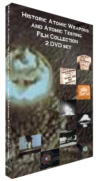Author Archive
Operation Crossroads Ships Sunk During Test Bakeron 25 July 1946
Battleships
USS Arkansas (BB-33)
Nagato (captured Japanese battleship)
Aircraft Carriers
USS Saratoga (CV-3)
Submarines
USS Apogon (SS-308)
USS Pilotfish (SS-386)
Auxiliary
ARDC-13
Landing Craft
LSM-60 (Surface Zero Ship)
District Craft
YO-160
The following target ships were sunk during Test Able of Operation Crossroads on 1 July 1946
Heavy Cruisers
Sakawa (captured Japanese heavy cruiser)
Destroyers
USS Anderson (DD-411)
USS Lamson (DD-367)
Attack Transports
USS Carlisle (APA-69)
USS Gilliam (APA-57)
Following the success of the widely popular 50 state quarter program, the U.S. Mint is rolling out the U.S. Presidential dollar coin series. The first coins will be placed into circulation in February 2007 and will rotate with a new president appearing every three months. The first four presidents will be George Washington, John Adams, Thomas Jefferson and James Madison.
To be qualified to be on a presidentail coin, a president must have been dead for two years. And each president will appear only one time. The only exception is Grover Cleveland who served nonconsecutive terms. He will be on two issues of the coin.
The coins are the size and color of the Sacagawea dollar.
This is the latest attempt of the U.S. mint to get the public to accept a dollar coin and this time they may succeed. A certain number of the coins will of course be collected and not be on the market but by keeping the coins interesting, it makes getting and working with the change fun.
If they are successful, they will save about $500 million annually in printing costs on one dollar bills as they will need to print less and less of them to replace worn out dollar bills as the new coin gets used more and more.
Duck and Cover is perhaps the most famous of the Cold War era civil defense films. Any child growing up during this era – the 50s – probably remembers watching Bert the Turtle educate them about atomic civil defense.
While the world has certainly changed dramatically from those days, the threat of a mass destruction device on a large city is still very real and it is good to be educated about what could happen and what steps you could take to ensure your maximum safety during an emergency – whether it be a natural disaster or a man made terrorist/war type disaster.
FEMA has a ton of information on a variety of civil defense related issues including:
* Chemical
* Dam Failure
* Earthquake
* Fire
* Flood
* Haz. Material
* Heat
* Hurricane
* Landslide
* Nuclear
* Terrorism
* Thunderstorm
* Tornado
* Tsunami
* Volcano
* Wildfire
* Winter Storm
If you live in an area where one of these types of events could occur, it may be wise to take a few minutes to review their civil defense procedures for that type of disaster so you can be better prepared for that eventuality.
The American Civil War was a fascinating time in U.S. history. Sentiments and support for both sides were expressed in various patriotic ways. Perhaps one of the most personal ways was artwork on envelopes.
It is estimated that 1000’s of different artist renditions were made for these civil war envelopes – from caricatures, allegories, slotains, portraits and much more. In fact some envelopes show portraits or caricatures of politicians, for example, of George Washington, Jefferson Davis, Benjamin Franklin, or Abraham Lincoln. State seals figure prominently, as do flags. Other significant topics in the collection are animals (especially the eagle), liberty, soldiers, sailors, and Uncle Sam.

